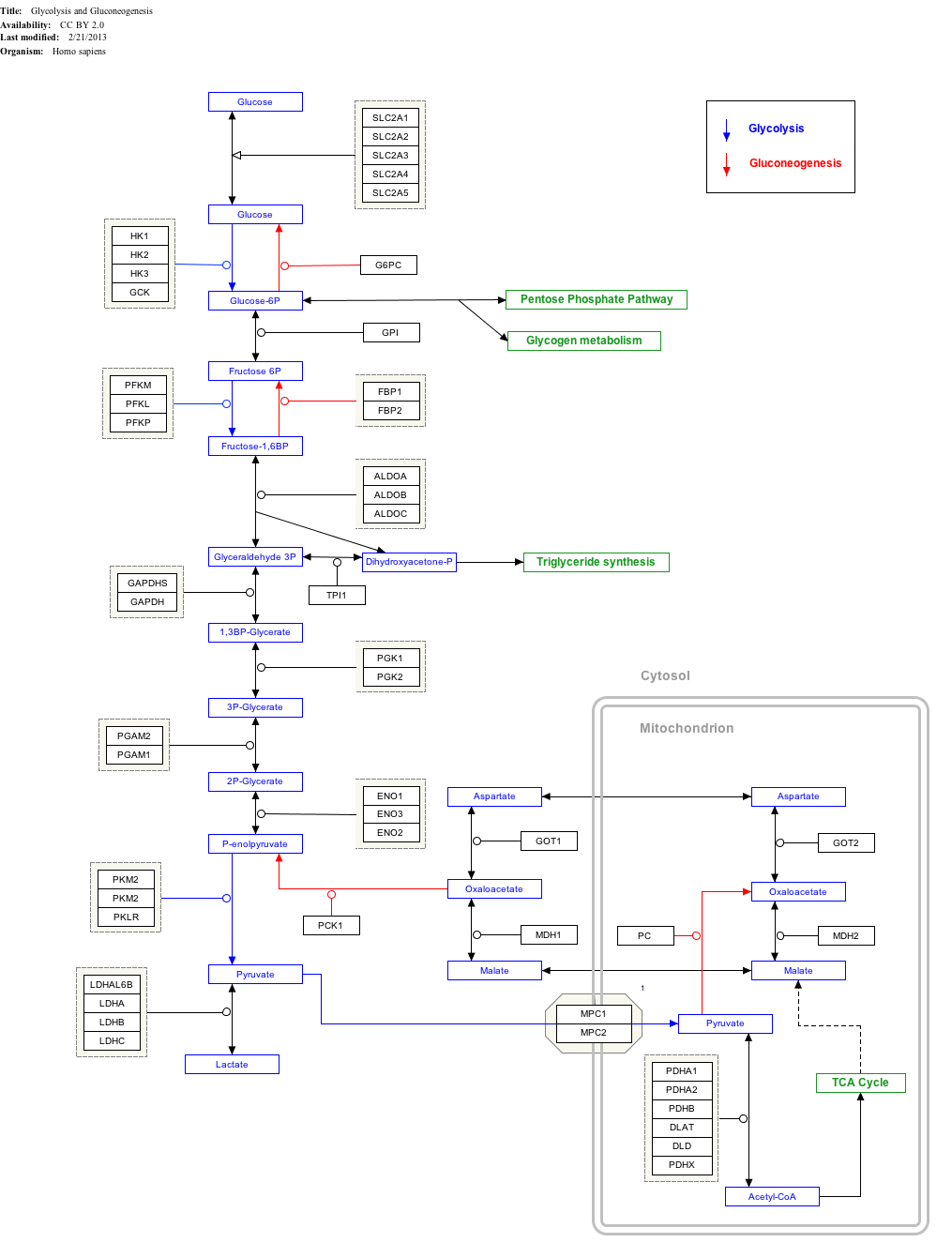Fructose 6-phosphate
The β-D-form of this compound is very common in cells.[1][2] The great majority of glucose is converted to fructose 6-phosphate upon entering a cell.[3] Fructose 6-phosphate lies within the glycolysis metabolic pathway and is produced by isomerisation of glucose 6-phosphate.Click on genes, proteins and metabolites below to link to respective articles.GlucoseHexokinaseGlucose 6-phosphateGlucose-6-phosphateisomeraseFructose 6-phosphatePhosphofructokinase-1Fructose 1,6-bisphosphateFructose-bisphosphatealdolaseDihydroxyacetone phosphate+Glyceraldehyde 3-phosphateTriosephosphateisomerase2 × Glyceraldehyde 3-phosphateGlyceraldehyde-3-phosphatedehydrogenase2 × 1,3-BisphosphoglyceratePhosphoglycerate kinase2 × 3-PhosphoglyceratePhosphoglycerate mutase2 × 2-PhosphoglyceratePhosphopyruvatehydratase (enolase)2 × PhosphoenolpyruvatePyruvate kinase2 × Pyruvate



IUPAC nameCAS NumberChemSpiderECHA InfoCardPubChemCompTox DashboardSMILESChemical formulaMolar massstandard statefructosephosphorylatedfructosephosphatesglucosefructose 1-phosphatefructokinaseCarl Neubergfructose 2,6-bisphosphateglycolysismetabolic pathwayglucose 6-phosphatefructose-1,6-bisphosphatePhosphoglucose isomerasePhosphofructokinase-1fructose 1,6-bisphosphateFructose bisphosphataseMannose phosphate isomeraseHexokinaseGlucose-6-phosphateisomeraseFructose-bisphosphatealdolaseDihydroxyacetone phosphateGlyceraldehyde 3-phosphateTriosephosphateisomeraseGlyceraldehyde-3-phosphatedehydrogenase1,3-BisphosphoglyceratePhosphoglycerate kinase3-PhosphoglyceratePhosphoglycerate mutase2-PhosphoglyceratePhosphopyruvatehydrataseenolasePhosphoenolpyruvatePyruvate kinasePyruvateW.H. Freeman and Company